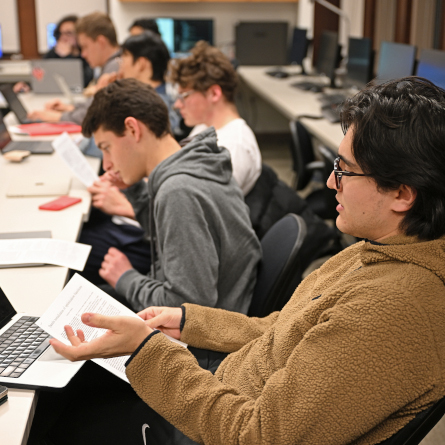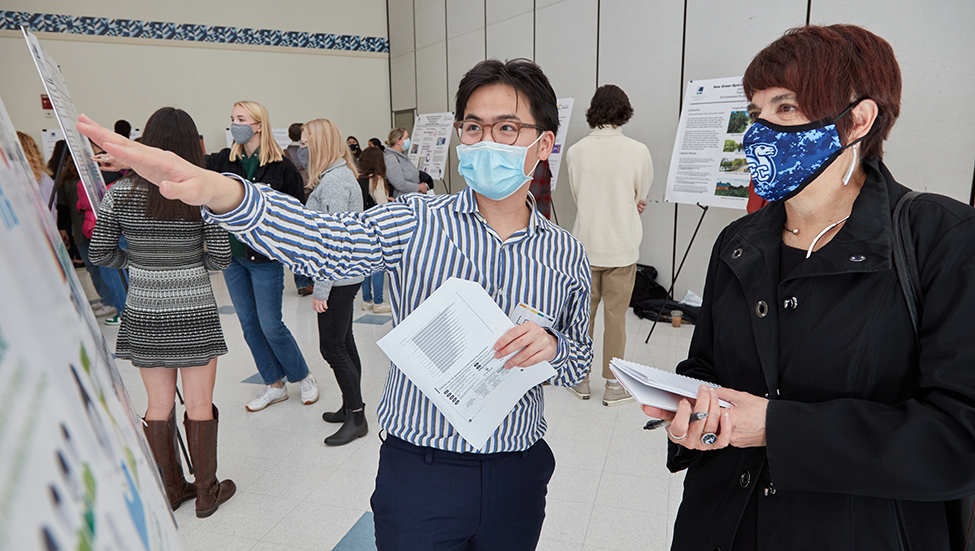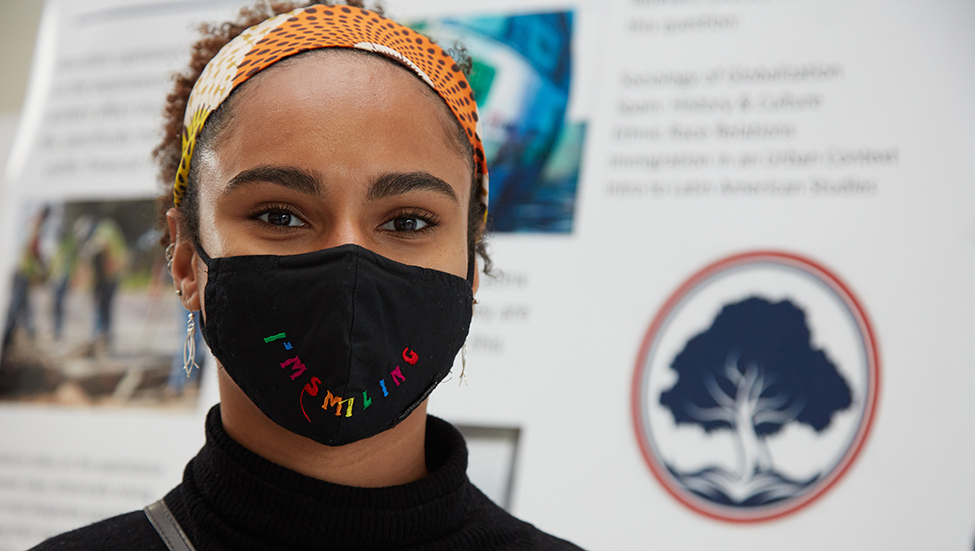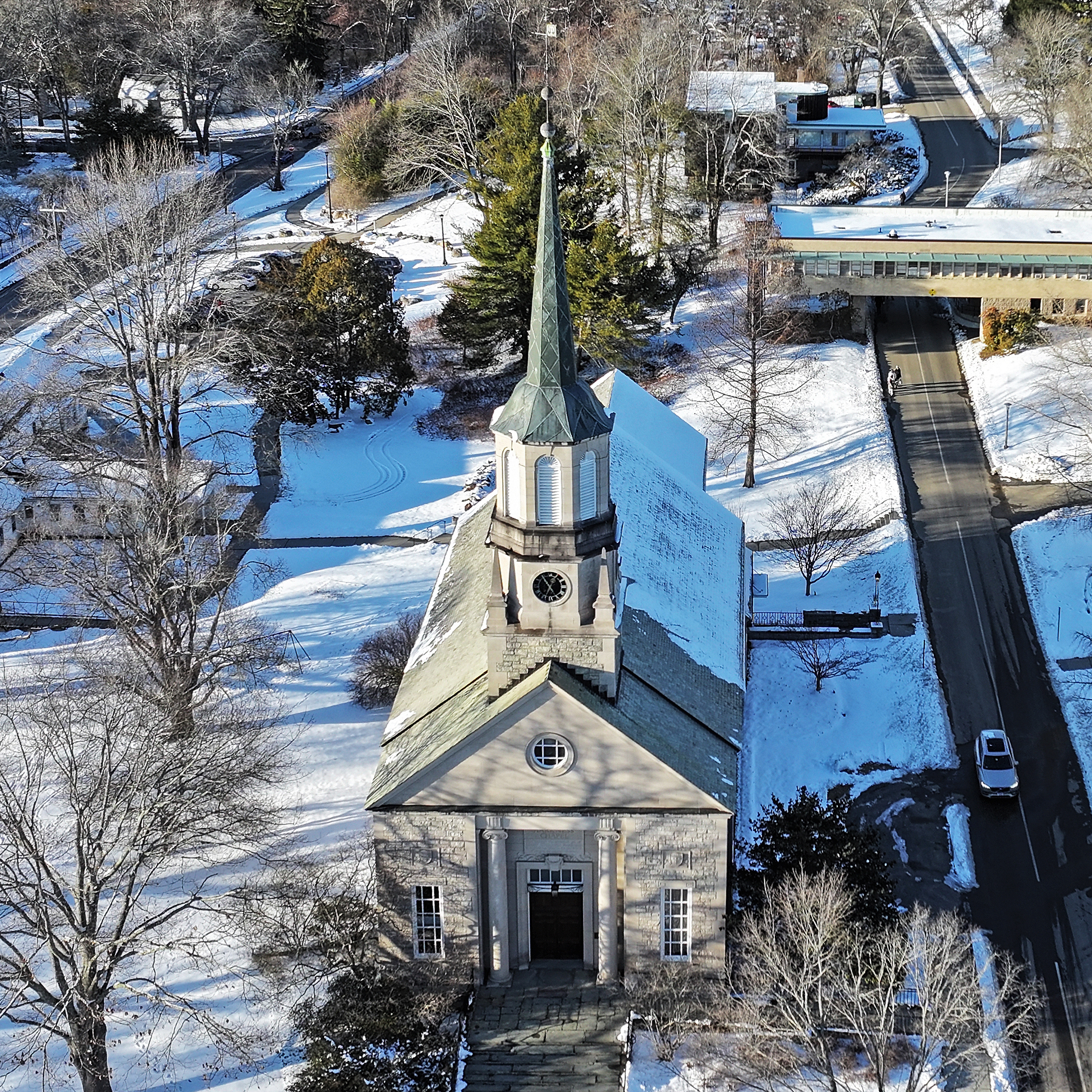
‘Brilliance on display’ at Conn’s third annual All-College Symposium
200 seniors showcased how their coursework and experiences have informed their studies over the past four years
Bri Goolsby ’22 has spent the past four years exploring the pervasiveness of racism in animation. Now, she’s ready to flip the script.
“I want to uplift the voices and talents of people of color through a medium that has the tendency to be oppressive,” said Goolsby, who is building an interactive website that will empower youth of color through animation skill-building and interviews with animators of color.
A film studies major, gender, sexuality and intersectionality minor and scholar in the Ammerman Center for Arts and Technology, Goolsby presented her research and previewed her website in front of an audience of faculty, staff and students during Connecticut College’s third annual All-College Symposium Nov. 4.
Goolsby, who plans to pursue a career as a screenwriter or storyboard artist for animated films or TV series, was one of 200 seniors who presented at the day-long event, which highlighted students’ integrative learning in Connections, the College’s reinvention of the liberal arts. Through talks, poster sessions, performances, screenings and exhibitions, the student presenters showcased the connections they have made among their courses and research, their jobs and internships, and their work in local communities and around the globe—along with the questions that animated their choices along the way.

“The All-College Symposium is a testament to the bold and creative spirit that defines Connecticut College,” Dean of the Faculty Jeff Cole and Dean of the College Erika Smith said in a message to the community.
“Our students, faculty, and staff have rallied to make our third annual symposium a wealth of ideas and conversations that exemplify the best in integrative learning and liberal arts education. We could not be prouder that in these unsettled times, they have taken on some of the most challenging questions in contemporary society—racism, climate change, economic access—through an interdisciplinary lens, and are sharing the fruits of their thoughtful inquiries with us.”
The presentations covered a diverse range of topics, including coastal wetland conservation; data and discrimination in the workplace; the architecture of detention; the prospect of a West African monetary union; media and the perception of mass migration in Germany; the effects of ecotourism on marine environments in Costa Rica and the Galápagos; the role of EdTech in expanding access to education; brand inclusivity through creative marketing; reducing food waste in New London; and the environmental impact of fast fashion.
President Katherine Bergeron, who attended more than 30 of the presentations, told the seniors she was very proud of them and the brilliance they displayed.
“I was moved beyond all things by your stories of personal and professional development,” she said.

Smith said her day brought her across expanses of thinking and experience ranging from art to climate science to the intersection of racial identity and disability to critical interrogation of the western film canon.
“I found myself having my own thinking shaped, moved and influenced as I walked from one session to the next,” she said.
Max Toscano ’22, an environmental studies major and scholar in the Creativity Pathway, told the faculty, staff and students in attendance during his talk that he drew inspiration from the Broadway musical “Dear Evan Hansen” for his animating question, “How can I leave some form of mark on the world?”
“There’s a particular line [in the musical] that struck me. It’s simple: ‘No one deserves to be forgotten,’” he said.
Toscano described how his experiences in the classroom, as a vocal student and as a musical theater performer, have helped him think more holistically about his approach to environmental science.
“The environmental arena needs difference makers, and it needs them right now,” he said. “We are flying blind without a map, and we need creatives to adapt to a changing and declining world.”
Eric Huber ’22, a computer science and economics double major and applied statistics minor, said he joined the Data, Information and Society Pathway to explore the ethical concerns of data usage and development in computer science.
“Throughout my Pathway experience, I was able to connect the courses that I was taking and my global-local engagement to my animating question, ‘How does machine bias produce systemically prejudiced results?’” he said.
“I hope I got the audience thinking more deeply about the ethics and complications of using computers as replacements for human decision-making.”

The Symposium concluded with a celebration on Tempel Green, featuring remarks by Bergeron; Smith; Samirah Jaigirdar ’22, an international relations and global Islamic studies double major, Arabic studies minor and Toor Cummings Center for International Studies and the Liberal Arts scholar who spoke about the limitations of international relations theory in analyzing U.S. foreign policy in the Middle East and North Africa; and Quinn Kilmartin ’22, a biology major, human development and psychology double minor and Public Health Pathway scholar who presented her research on the importance of reproductive justice and the future of Roe v. Wade.
“I am in awe of the originality, intelligence and creativity that I have seen in everyone’s Pathway and Center projects today,” Kilmartin said at the event. “I can truly see how Pathways and Centers have pushed us and challenged us to be better students and better people.”
Kilmartin added that her own Pathway experience has been transformational.
“My Public Health Pathway has allowed me to connect my academic interests to my personal passions and professional goals and imagine new possibilities for my future,” she said.
“I am so incredibly grateful that Connections has served as this conduit for the rest of my life, and for this amazing community that has supported me along the way.”

